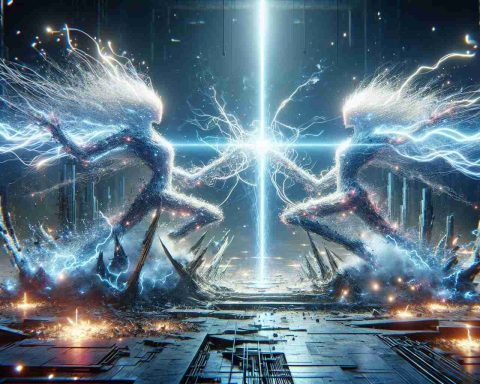The Rise of Electric SUVs: Hyundai Creta vs. Mahindra BE 6
The electric vehicle market is heating up with the introduction of the Hyundai Creta Electric and the Mahindra BE 6. Unveiled at the Auto Expo 2025, the Creta Electric enters the fiercely competitive compact SUV arena with a starting price of ₹17.99 lakh, ex-showroom. This segment is gaining momentum, boasting new contenders after the successful models like the Hyundai Kona Electric and MG ZS EV.
In a sharp contrast to Hyundai’s classic design ethos, Mahindra has pushed boundaries with the BE 6 by incorporating avant-garde aesthetics and advanced technology. Both SUVs aim to capture the attention of environmentally conscious consumers.
When it comes to performance, the Creta Electric offers two battery options: a 42 kWh variant with a 390 km range and a 51.4 kWh model offering up to 473 km. Meanwhile, the BE 6 is equipped with the largest batteries in its class — either a 59 kWh or 79 kWh pack, enabling ranges of up to 556 km and an impressive 682 km, respectively.
Under the hood, the Hyundai variant ensures a powerful 169 bhp output while Mahindra shines with up to 277 bhp, and the ability to reach 100 kmph in under seven seconds. Pricing is competitive, with the BE 6 starting at ₹18.90 lakh, edging higher for its premium options.
As electric mobility gains momentum, the battle between these two automakers highlights innovation and consumer choice in the EV landscape.
The Broader Impact of Electric SUVs: Societal Shifts and Future Considerations
As the electric vehicle (EV) market evolves with the introduction of contenders like the Hyundai Creta Electric and Mahindra BE 6, the implications extend far beyond mere consumer choices. The transition to electric SUVs represents a pivotal moment for society, reflecting a growing awareness of climate change and a collective movement towards sustainable living. This shift not only caters to the environmentally conscious consumer but also shapes urban planning and infrastructure development, necessitating a robust network of charging stations and supporting technologies.
Culturally, the rise of electric SUVs signifies a paradigm shift toward eco-friendly lifestyles, affecting everything from vehicle design to marketing strategies. As more consumers embrace electric vehicles, automakers are increasingly investing in innovative designs and sustainable materials, thereby realigning brand identities with ecological responsibility.
In terms of the global economy, the EV surge is anticipated to create millions of jobs across various sectors, from raw material sourcing for batteries to manufacturing and infrastructure development. However, this transition raises concerns about resource extraction and supply chains, especially in regions rich in lithium and cobalt needed for batteries.
Looking forward, environmental considerations will take center stage. The expansion of electric vehicle use could significantly reduce urban air pollution, promoting public health while advancing global climate goals. Moreover, as technology improves, we expect trends toward longer battery life and quicker charging solutions, positioning electric SUVs as viable alternatives to traditional vehicles. In this fast-evolving landscape, the long-term significance of these advancements may pave the way for a greener, cleaner planet.
The Future of Electric SUVs: A Deep Dive into Hyundai Creta Electric vs. Mahindra BE 6
The Rise of Electric SUVs: Hyundai Creta vs. Mahindra BE 6
The electric vehicle market is evolving rapidly, with significant advancements and fresh introductions reshaping consumer choices. Among the notable entries are the Hyundai Creta Electric and the Mahindra BE 6, both set to make waves in the compact SUV segment. They were first showcased at the Auto Expo 2025, highlighting the intense competition amongst electric SUVs in India.
Key Specifications
Hyundai Creta Electric
– Price: Starting at ₹17.99 lakh (ex-showroom)
– Battery Options:
– 42 kWh: Range of 390 km
– 51.4 kWh: Range of up to 473 km
– Power Output: 169 bhp
Mahindra BE 6
– Price: Starting at ₹18.90 lakh (ex-showroom)
– Battery Options:
– 59 kWh: Range of 556 km
– 79 kWh: Range of up to 682 km
– Power Output: Up to 277 bhp, achieving 0 to 100 km/h in under seven seconds
Innovations in Design and Technology
While the Hyundai Creta retains a traditional design language that appeals to a broad audience, Mahindra has embraced a more futuristic aesthetic with the BE 6. This model features advanced technologies such as connected car features, over-the-air updates, and enhanced driver-assistance systems. Both vehicles cater to environmentally conscious consumers seeking modern solutions without sacrificing style or performance.
Pros and Cons
# Pros of Hyundai Creta Electric
– Familiar design appealing to existing Hyundai customers
– Competitive pricing within its class
– Two battery options for flexible consumer choice
# Cons of Hyundai Creta Electric
– Lower range compared to Mahindra BE 6
– Limited power output relative to competitors
# Pros of Mahindra BE 6
– Impressive range capabilities with high-capacity battery options
– Higher power output for a sportier driving experience
– Cutting-edge technological features
# Cons of Mahindra BE 6
– Higher starting price may deter budget-conscious buyers
– Less recognizable brand presence in the electric segment
Market Trends and Insights
The electric SUV market is witnessing a surge in demand as consumers become increasingly concerned about sustainability and fuel efficiency. The push for green vehicles aligns with global trends towards reducing carbon footprints, making electric SUVs a focal point for automotive manufacturers. According to industry analysts, electric vehicle sales in India are expected to grow significantly in the next five years, partly driven by government incentives and evolving consumer preferences.
Use Cases
Both the Hyundai Creta Electric and Mahindra BE 6 are ideal for urban commuting, family outings, and long-distance travels, with the latter offering superior range for those who frequently venture beyond city limits. Their electric nature makes them suitable for environmentally conscious families looking to reduce their carbon emissions without compromising on versatility.
Security Aspects
As electric vehicles gain popularity, security has become a pivotal concern. Both models promise robust security features, including GPS-based tracking systems and advanced anti-theft mechanisms. With the advent of connected technologies, manufacturers can offer real-time monitoring and assistance, further enhancing vehicle security.
Conclusion
The competition between the Hyundai Creta Electric and Mahindra BE 6 showcases how the electric SUV segment is pushing the boundaries of innovation and customer choice. With a diverse range of specifications and features, consumers now have better options to select from, aligning with their personal preferences and lifestyle needs. As the market matures, the battle for dominance will likely inspire even more advancements, ensuring that electric SUVs become a staple in the automotive landscape.
For more insights and news on electric vehicles, visit Autocar India.









